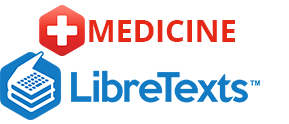August 2020
You may have heard of the abbreviations LDL and HDL with respect to heart health. These abbreviations refer to low-density lipoprotein (LDL) and high-density lipoprotein (HDL), respectively. Lipoproteins are characterized by size, density, and composition. As the size of the lipoprotein increases, the density decreases. This means that HDL is smaller than LDL. Why are they referred to as “good” and “bad” cholesterol? What should you know about these lipoproteins?
Major Lipoproteins
Recall that chylomicrons are transporters of fats throughout the watery environment within the body. After about ten hours of circulating throughout the body, chylomicrons gradually release their triacylglycerols until all that is left of their composition is cholesterol-rich remnants. These remnants are used as raw materials by the liver to formulate specific lipoproteins. Following is a list of the various lipoproteins and their functions:
- VLDLs. Very low-density lipoproteins are made in the liver from remnants of chylomicrons and transport triacylglycerols from the liver to various tissues in the body. As the VLDLs travel through the circulatory system, the lipoprotein lipase strips the VLDL of triacylglycerols. As triacylglycerol removal persists, the VLDLs become intermediate-density lipoproteins.
- IDLs. Intermediate-density lipoproteins transport a variety of fats and cholesterol in the bloodstream and are a little under half triacylglycerol in composition. While travelling in the bloodstream, cholesterol is gained from other lipoproteins while circulating enzymes strip its phospholipid component. When IDLs return to the liver, they are transformed into low-density lipoprotein.
- LDLs. As low-density lipoproteins are commonly known as the “bad cholesterol” it is imperative that we understand their function in the body so as to make healthy dietary and lifestyle choices. LDLs carry cholesterol and other lipids from the liver to tissue throughout the body. LDLs are comprised of very small amounts of triacylglycerols, and house over 50 percent cholesterol and cholesterol esters. How does the body receive the lipids contained therein? As the LDLs deliver cholesterol and other lipids to the cells, each cell’s surface has receptor systems specifically designed to bind with LDLs. Circulating LDLs in the bloodstream bind to these LDL receptors and are consumed. Once inside the cell, the LDL is taken apart and its cholesterol is released. In liver cells these receptor systems aid in controlling blood cholesterol levels as they bind the LDLs. A deficiency of these LDL binding mechanisms will leave a high quantity of cholesterol traveling in the bloodstream, which can lead to heart disease or atherosclerosis. Diets rich in saturated fats will prohibit the LDL receptors. Thus, LDL receptors are critical for regulating cholesterol levels.
- HDLs. High-density lipoproteins are responsible for carrying cholesterol out of the bloodstream and into the liver, where it is either reused or removed from the body with bile. HDLs have a very large protein composition coupled with low cholesterol content (20 to 30 percent) compared to the other lipoproteins. Hence, these high-density lipoproteins are commonly called “good cholesterol.”











